-
Shadow Colour for SketchUp®
-
Shadow Colour for Autodesk® Revit®
-
Planary for Autodesk® Revit®
-
Planary for Autodesk® AutoCAD®
-
Account Management
-
Changelog
-
Marketing Plans for Autodesk® Revit®
-
- Articles coming soon
-
Conduct a Shadow Study
Add elements and assign colours
Option 1 – Add Elements From The View
Useful for early-stage study. It works best with fewer elements that can be easily picked from the view, such as Massing, Revit groups and linked files.
Click on ‘Add Element’ and pick a mass from the Revit view (any Revit component, mass or linked CAD). The first element will be the top layer (usually the city context), and the last element will be the bottom layer (usually the proposed building).
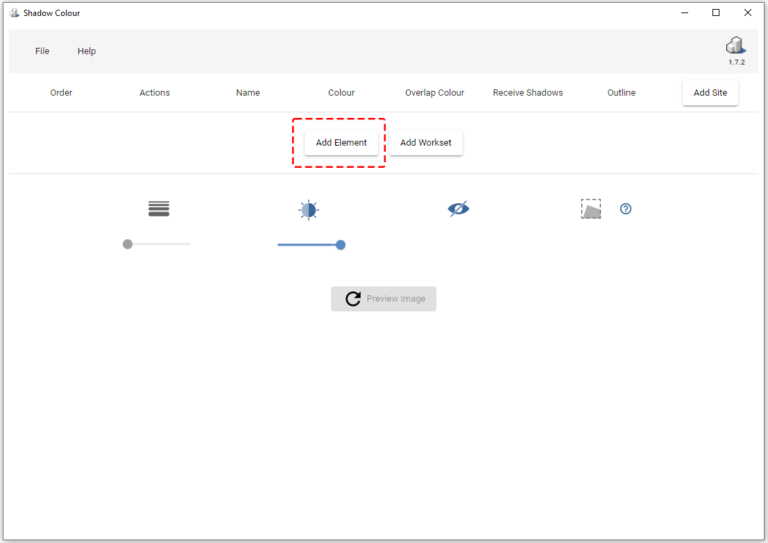
Option 2 – Select Worksets
Useful when your Revit project has many elements and is organized in different worksets.
Click ‘Add Workset’ and select a Workset from the drop-down menu. The first Selected Workset will be the top layer (usually the city context), and the last element will be the bottom layer (usually the proposed building).
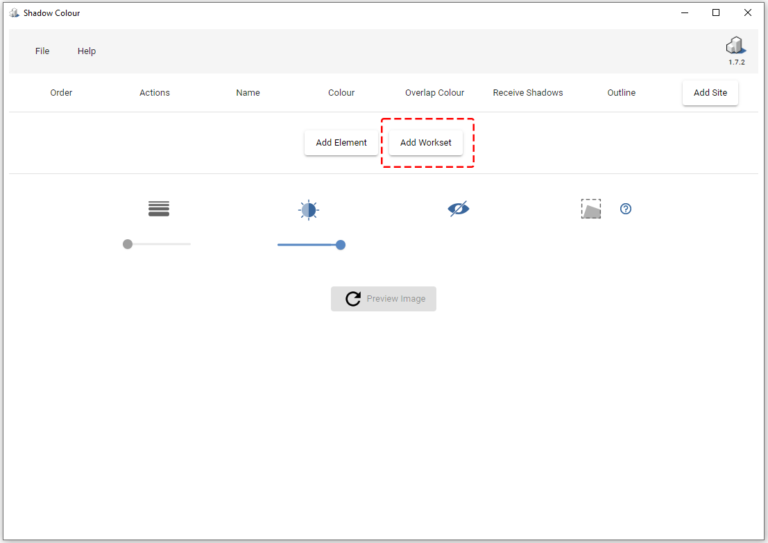
1. Assign colour and opacity for each Element (layer) by using the colour picker.

2. Under ‘Actions’, you can delete element from the study
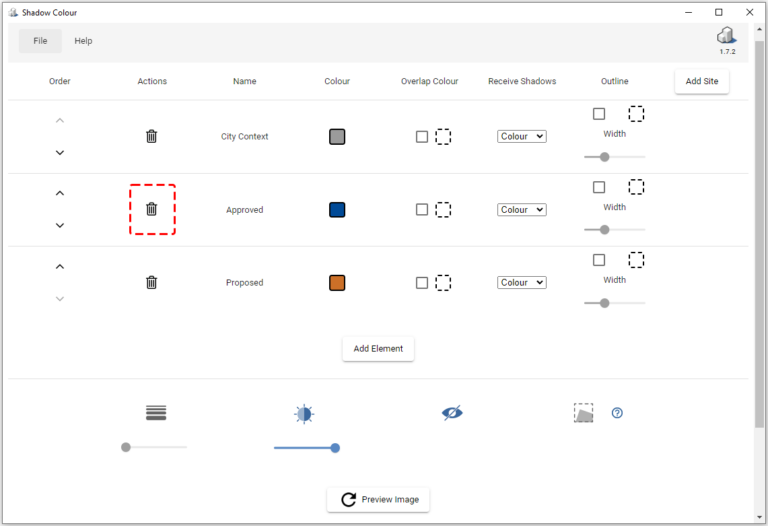
3. You may change the order of the shadows laid on top of each other.
Up – Bring element’s shadow forward
Down – Send element’s shadow backward

4. Under ‘Overlap Colour’, you can assign a colour for the overlapping shadow to the corresponding layer.
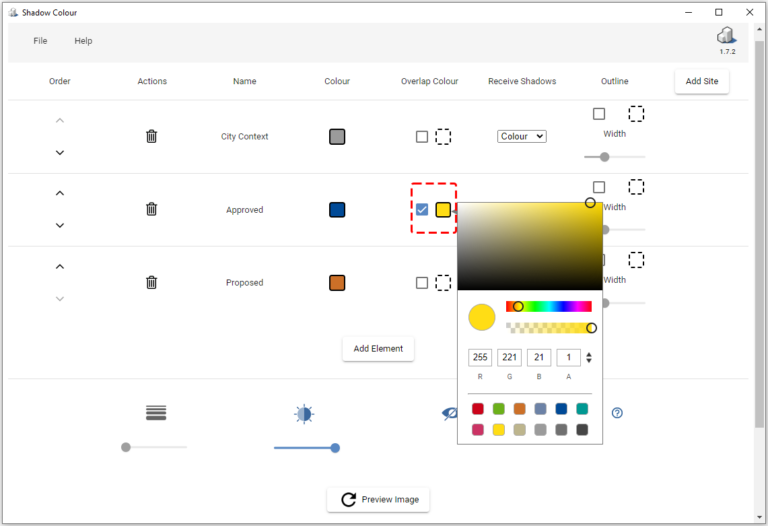
5. Under ‘Receive Shadows’ , you can change the colour of the shadows cast on top of the corresponding element (layer).
- Colour – Any shadow that is cast on this element will be coloured using the colour that was chosen for the element that is casting the shadow.
- As View – Any shadow cast on this element will be coloured grey using the shadow intensity configured in Revit.
- Invisible – Shadows cast on this element will not be shown.

6. Create an outline for shadow (optional). Choose a colour and outline width using the slider.

7. Optionally, you may change all the lines’ width in the view using the slider under ‘Line Width’

8. You can control the shadow intensity in the view using the ‘Shadow Intensity’ slider.
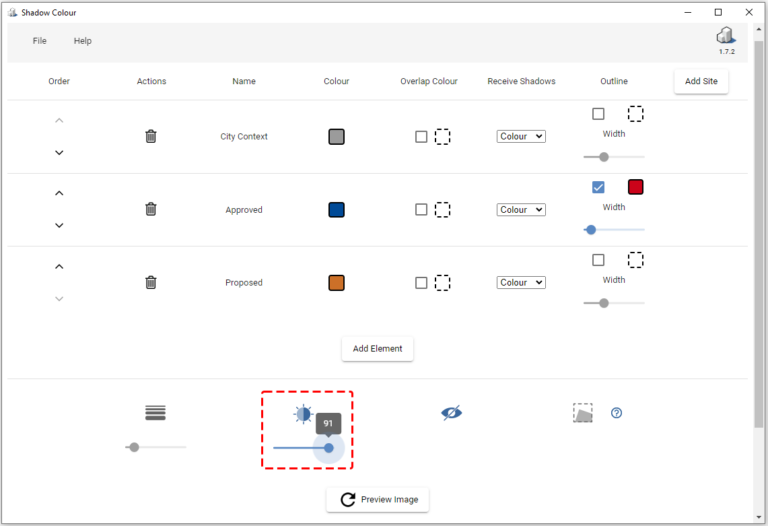
9. Hide model elements that are not in the study – Shadow Colour will not include unpicked model elements or worksets that are not in the study.
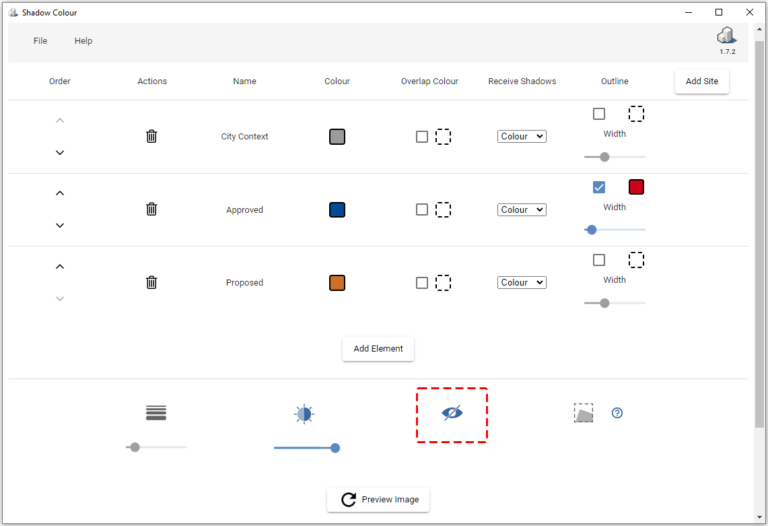
10. Click ‘Preview Image’ to get a preview of how your shadow study will look like.
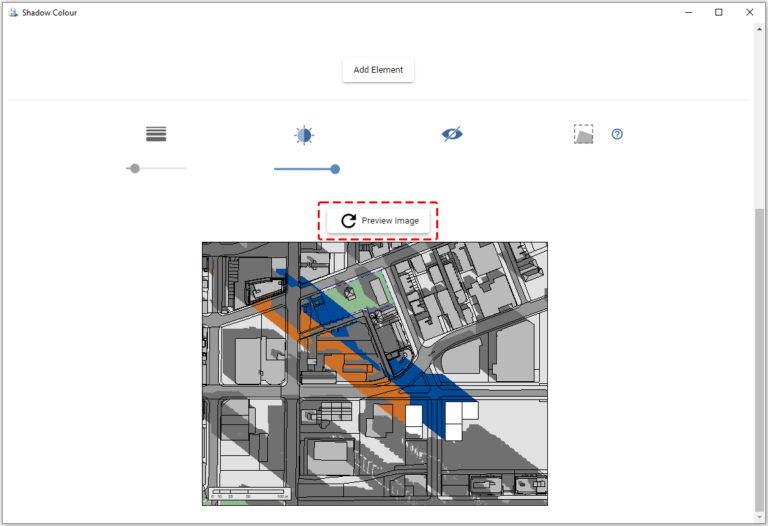
Shadows Colour on Sites
In certain scenarios, you might want to use a different colour for shadows that are cast within a specific site/property.
You may assign a different colour for shadows within a site.
1. Click ‘Add Site’ and select a property line from the Revit view.
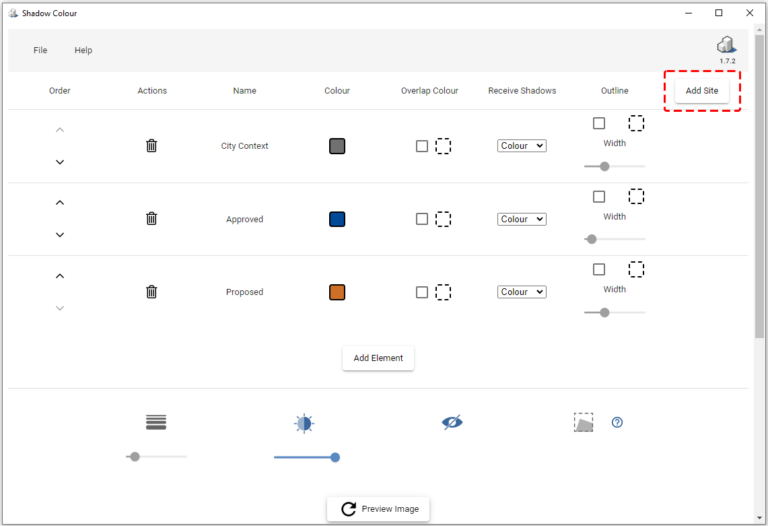
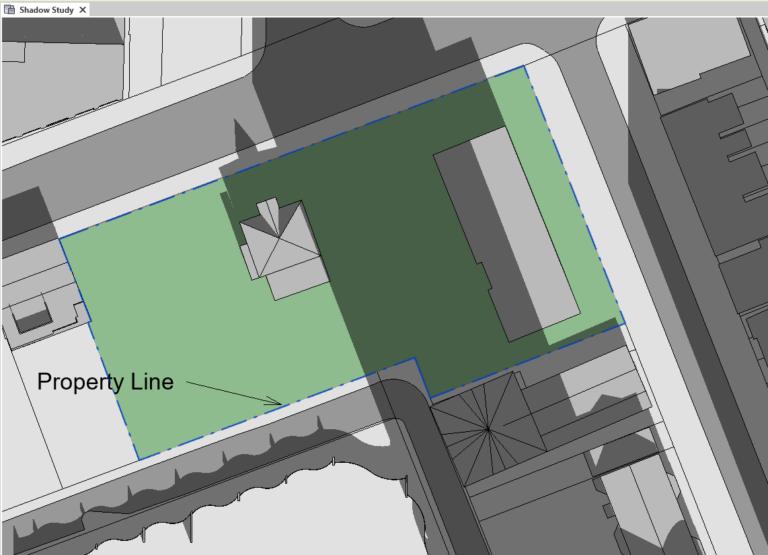
2. Select a colour for the element’s shadow that falls within the selected site.


Area Calculation
Shadow Colour allows you to calculate the shadow area within selected sites.
To generate a shadow area calculation, please ensure the following:
- The view is Top and orthographic/parallel projection.
- The site is fully contained within the view.
Click on the Area Calculator icon.

Click on preview and the area calculation will be added next to the preview image.
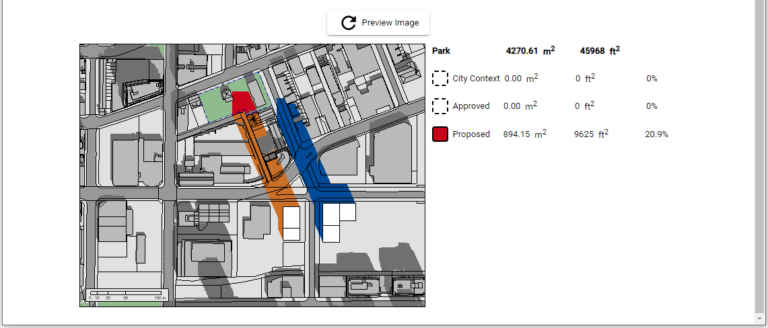
A quick video tutorial on how to calculate shadows area is available here:
Once you’re happy with the preview, you would want to export the shadow study.
Continue to the next article to see how.
